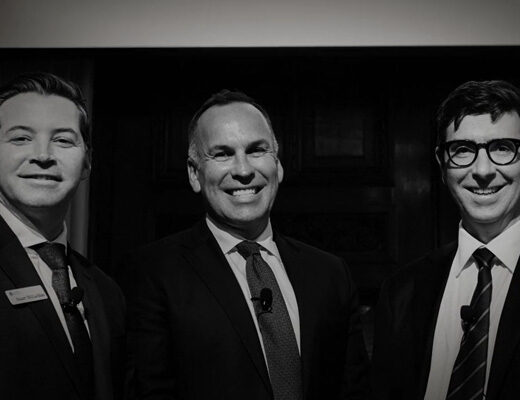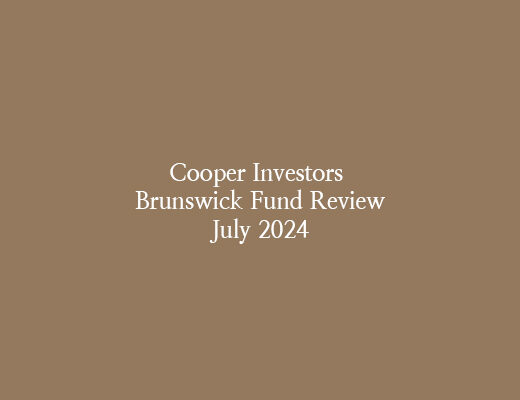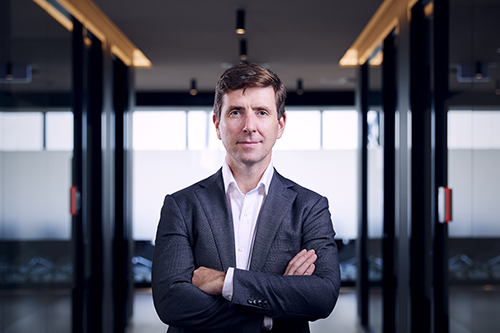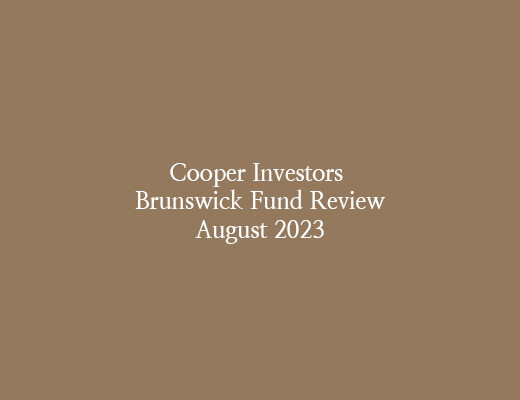The highly regarded (but under-reported) founder of Cooper Investors recently broke cover during an interview that traversed a wide range of topics. His flagship CI Brunswick Fund (named after the Melbourne suburb where he grew up) has returned 16% since it launched in 2006. In cumulative terms, this performance means that $1000 tipped into the fund back then would have grown to around $9,000 as of January.
By Glenn Freeman
Source: Limewire Markets
Nay 31, 2022
Cooper recently spoke with Euroz Hartleys, a Western Australian financial services company, as part of the firm’s Finding the Front podcast series.
Of all places, it was at racetracks – where Cooper spent time during his formative years and into his early 20s – that he was first exposed to factor analysis.
“Putting valuations around risk, the different sources of information – trainers, strappers, and other informed people – it fascinated me from a risk approach, and you see anomalies in betting markets,” Cooper said.
“This got me interested in factor analysis – looking at different influences on outcomes – which I took into my investing career.”
Cooper’s now 35-year career in finance started just months before the Black Monday market crash of 1987 when he became an assistant investment analyst for the State Super Board of NSW in Sydney.
This proved to be an important period – though Cooper said he didn’t realise it at the time.
In addition to Black Monday, when the Dow Jones Industrial Average fell more than 22% in a single day, Cooper’s 35-year career has also been punctuated by:
- The mid-1990s bond crisis
- The Asian Crisis of 1997
- The dotcom bust of 2000
- The GFC of 2008, and
- most recently, the COVID-19 pandemic.
What inflation means for investors
Asked what these periods tell us about the current market, the effect of inflation on equity markets is among the standout lessons for Cooper. He regards inflation rates of between 0% and 2% as very good for equity markets, while inflation rates of 2% to 4% cause a bit of a problem in real terms.
“And after 4% inflation, you start to get real degradation of equity returns over five- and 10-year periods. Today, around the world we’re above 7%,” Cooper said.
But in terms of underlying inflation – a concept he’s not too keen on because it excludes energy and food – he regards inflation as being around 6% in the US and half that figure in Europe. And in Australia, it’s in the range of 3% to 4%.
“Zeroing in on underlying inflation, the promising outlook would be that you get inflation settling down in that 3% to 5% area, which wouldn’t be great for equity markets but it’s not a disaster,” Cooper said.
Exciting times, but don’t rush in
In this environment – just as it was during 1987, the GFC of 2008 and now COVID, events that he dubs “the 40% corrections” – Cooper says even well-positioned fund managers find it difficult. And it highlights the importance of durability of portfolios and companies.
“One part of me is excited by downturns. I wouldn’t want to rush too hard into it because it’s early days, but half of the NASDAQ is down 50% and 20% of the index is down 70%,” Cooper said.
“You could say this is a very special time in history.”
In such markets, he believes the strong companies get stronger, something that revolves around finding companies with:
Sustainable and durable balance sheets
Management teams with deep industry expertise.
Knowing when to buy and sell
The word “transitory” has become common usage over the last 12 months, particularly in connection with the debate about the durability of rising inflation. But as Cooper explained, it also applies to stock selection, including knowing when to sell a position.
“Intellectual humility is so important. You need to look at which changes are secular (longer term) and which are shorter-term,” he said
How CI picks stocks
Cooper’s team, which includes around 20 portfolio managers within the investment department – conducts a staggering 1500 company visits each year.
“It’s a huge amount, and we concentrate those down to roughly 400 companies across the world that we’ve formally put on watchlists, and out of those we do those 1500 visits a year,” Cooper said.
“But a lot of it is repetition, talking to management about what’s different, and what’s permanent damage versus short-term blips. The investment process is very much driven around these risk factors.”
Key aspects here include thinking about company earnings in terms of outcomes and assessing whether company stock prices reflect all the growth the team at CI sees.
Capital allocator champions
Among the types of companies favoured by CI are the “capital allocator champions.” For Cooper, these are distinguished by:
Share prices at the bottom of a dip
Conservative opportunity sets
Balance sheets that are latent, with the ability to buy back cheap stock.
“They’re very lowly leveraged and have deep vertical industry knowledge, so they’re fantastic in these downturns as competitors fall by the wayside. These are the management teams that get to eat their own cooking because they’re owners not just agents,” Cooper said.
That’s how they determine the companies worth owning. But what are the red flags?
Cooper said many companies are currently seeing profits going up, “but they’re pulling the levers in less than conservative ways – they’re putting up prices, channel stuffing, doing unnecessary buybacks and leveraging the company up just to get earnings per share.”
The stocks behind Brunswick’s performance
The most recent quarterly update from CI indicates, for the March Quarter, shows the fund returned -4.66% versus 2.24% for the ASX 200 benchmark. But it remains well ahead over the year-to-date, up just over 10% in 2022 so far, while the benchmark returned 6.17%.
This short period of underperformance was driven by falls in some of the fund’s “growth and stalwart” stocks in both domestic and international markets.
As Cooper mentioned earlier, these “capital allocator champions” are the focus of the CI portfolio. The fund has been selling down some of these compounding stocks over the last 12 months and investing the proceeds into cyclical stocks and those the team believe have good prospects of a turnaround. As the following chart shows, had this not been the case, the returns could have been worse, with the -17% returns from this cohort offset by the fund’s cyclical and low-risk turnaround stocks.
But Cooper remains committed to these compounding companies, which over most periods have returned around 20%, even delivering 14% returns if they’d been bought shortly before the GFC hit in 2007. Examples include:
- Lifestyle Communities (ASX: LIC) – a developer and operator of land-lease communities in Victoria. CI expects it will benefit from growing demand due to the ageing population and the company’s an affordable, high quality product.
- Mainfreight (ASX: MFT) – a provider of quality freight and logistics services with the ability to grow across all of its markets (NZ, Australia, Europe, US).
- ARB (ASX: ARB) – leading manufacturer of 4WD accessories both domestic and offshore. Strong runway for growth into the US via Ford’s Bronco and Ranger.
- CSL Limited (ASX: CSL) – a speciality biotechnology company and global leader in blood plasma related medical products.
- Reece (ASX: REH) – a leading plumbing distribution business with a multi-decade opportunity to build market share and scale in the US market.
The fund also maintains an overweight allocation to small and mid-cap stocks. But given their greater sensitivity to market downturns, most of the recent purchases have been from the large-cap universe.
Other contributors to performance in the first quarter were:
- Chemical company Orica (ASX: ORI)
- Shareholder registry firm Computershare (ASX: CPU)
- Mining company BHP Group (ASX: BHP).
Another stock in the fund, the consumer lending company Liberty Financials Group (ASX: LFG) also reported a solid first-half 2022 result during the quarter, its net profits up around 4% on the prior period. This follows a record FY2021 profit that was up more than 60% on FY2020.






